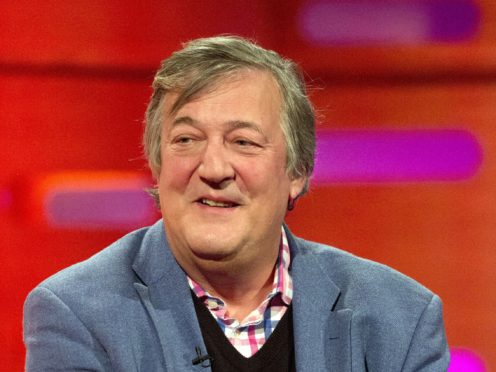Stephen Fry has torn Brexit to shreds in his first public comment on the issue, saying the Leave campaign was built on deception, racism and baseless fear.
Fry released a slick animated video on Friday in which he calls for a second referendum on the Brexit deal and slams Brexiteers like Boris Johnson and Jacob Rees-Mogg.
The actor and novelist says the Leave campaign employed “deceptive framing” to instil false views about the European Union and immigrants.
“This is the story of how a mythical EU dragon was conjured up,” Fry says in the 11-minute video, published on YouTube by Pindex.
He suggests Britons were fooled by Nazi-like media reports that labelled immigrants as job-stealing “cockroaches”, and headlines that incited hatred.
The video shows right-wing commentator Katie Hopkins, who once wrote in The Sun: “Show me bodies floating in water, play violins and show me skinny people looking sad. I still don’t care.”
“The UK media is the least trusted in Europe, by some margin,” Fry says.
Leave campaign leaflets and posters also used subtle deception and falsehoods to play on a fear of immigrants, Fry says.
“Brexiteers sailed in on fears built up over decades,” he says.
He says Brexiteers claimed to be fighting the establishment, a message that resonated with Britons who had suffered wage stagnation while “the rich had grown richer”.
“Projecting a fight against the establishment allowed the Leave campaign to brush research, data and expert advice under the carpet.”
By contrast, the former QI host uses facts and expert commentary in the video to debunk Brexiteer myths.
Fry shows European migrants made a net contribution of £20 billion to UK finances between 2000 and 2011.
Vast amounts of NHS, education and pension spending goes to children and the elderly, while the majority of immigrants are aged 16 to 40.
“They are exactly what Britain needs to support its ageing population,” Fry says.
“They boost public finances. Pay more indirect taxes. Make much less use of public services.”
He adds: “In a poll of top economists, 80% agree that people in the UK would be poorer as a result of Brexit. Only 2% disagree.”
But perhaps the Leave campaign’s greatest trick was to “steal from the cheap Trump playbook” and accuse Remainers of creating false facts, Fry says.
“The Brexiteers, the arch instigators of electoral fear themselves, routinely labelled all the warnings from experts as ‘Project Fear’,” he said.
“Expert warnings which have become starkly true throughout this shambles of a negotiation period.”
The video ends with a call for a people’s vote on the Brexit deal, as polls show more people would now wish to remain in the EU.
“Perhaps in a final vote, facts would start to overcome fears. Wouldn’t that be a win for informed democracy?”
A spokesman said Fry had heavy input into the script for the video, titled Brexit: Facts vs Fear, With Stephen Fry.
It is the actor’s first major public comment on the subject, which has been at the centre of UK politics for months.
The video was produced by science and education video platform Pindex.
